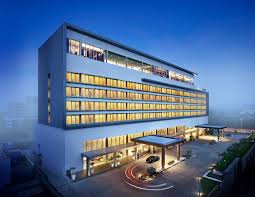Exploring Hinjawadi: Pune’s Vibrant IT Hub

Introduction
Hinjawadi, a prominent locality in Pune, Maharashtra, has emerged as a nucleus for the information technology and software industry. This area has seen tremendous growth over the years, making it a vital part of India’s IT landscape. With numerous tech parks, start-ups, and established IT companies operating within its boundaries, Hinjawadi plays a crucial role in attracting talent and fostering innovation.
Growth and Development
Over the last decade, Hinjawadi has transformed from a suburban area to one of the most sought-after destinations for IT professionals. The establishment of the Rajiv Gandhi Infotech Park in 1999 marked the beginning of this trajectory. This park provides a conducive environment for various IT enterprises, including global giants like Wipro, Infosys, and Tech Mahindra, creating thousands of job opportunities.
In recent years, the area has also witnessed significant infrastructure improvements, including better road connectivity, public transport options, and essential amenities. These developments have attracted not only IT companies but also other businesses and entrepreneurs looking to capitalize on the growing potential of Hinjawadi.
Real Estate Boom
As the IT industry flourishes, Hinjawadi has also experienced a real estate boom. Residential apartments, luxury housing, and commercial spaces are being developed at an unprecedented pace. The demand for housing has surged as professionals flock to the area for employment, leading property developers to invest heavily in the region.
According to reports, property prices in Hinjawadi have witnessed a steady increase, making it a lucrative destination for real estate investment. This increase in housing options reflects the area’s growing importance as a residential hub for IT employees who prefer living closer to their workplaces.
Challenges Ahead
Despite the rapid development, Hinjawadi faces significant challenges. The influx of professionals has led to increased traffic congestion and pressure on public infrastructure. Local authorities are working on solutions, including expanding road networks and improving public transport facilities, but the need for sustainable urban planning remains critical as the area continues to grow.
Conclusion
Hinjawadi has established itself as an integral part of Pune’s economic landscape and an essential hub for the IT industry in India. Its growth trajectory suggests that it will continue attracting talent and investment in the foreseeable future. As stakeholders work toward addressing existing challenges, the potential for further development seems promising, positioning Hinjawadi as a beacon of innovation and opportunity in the years to come.









